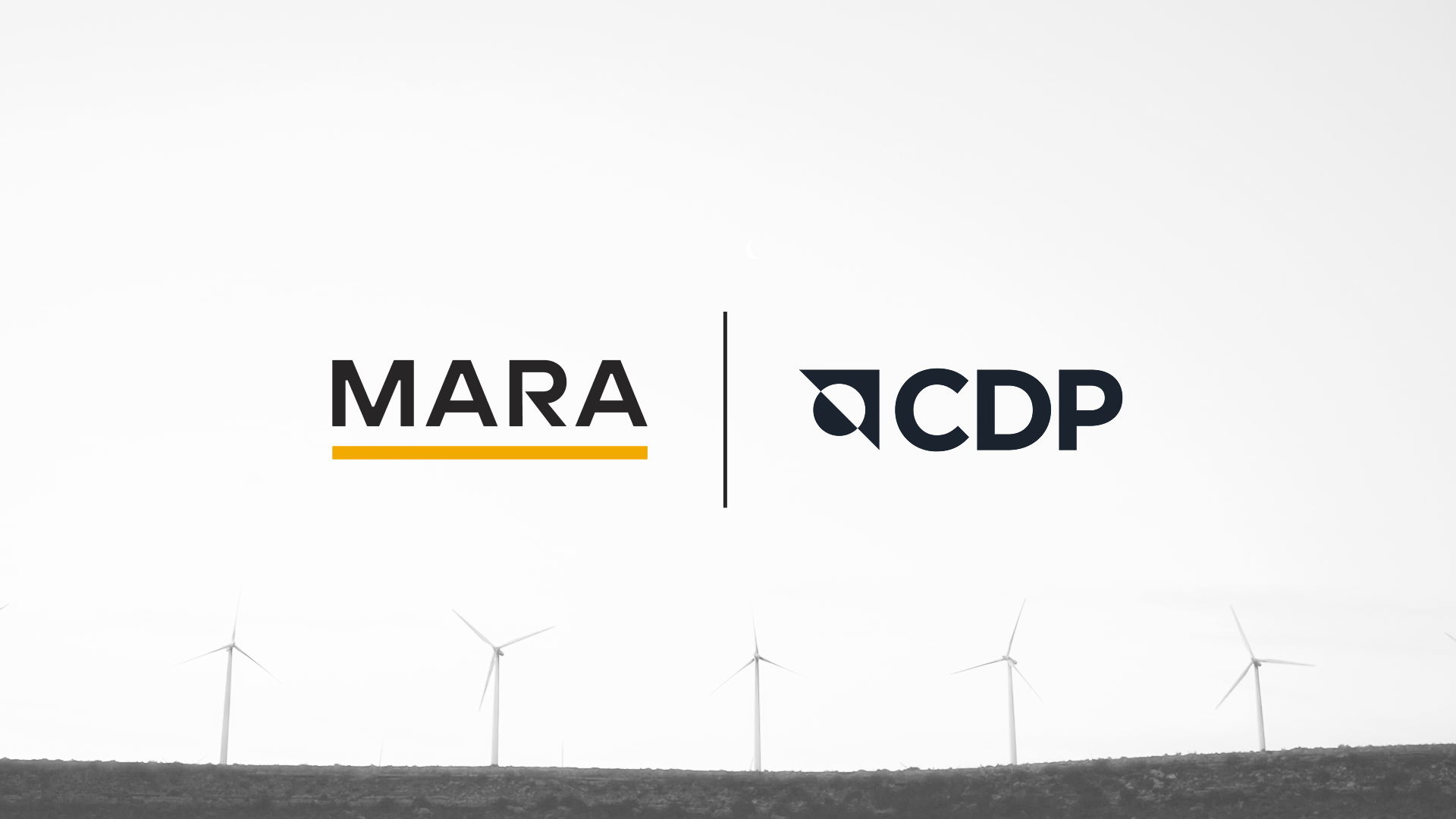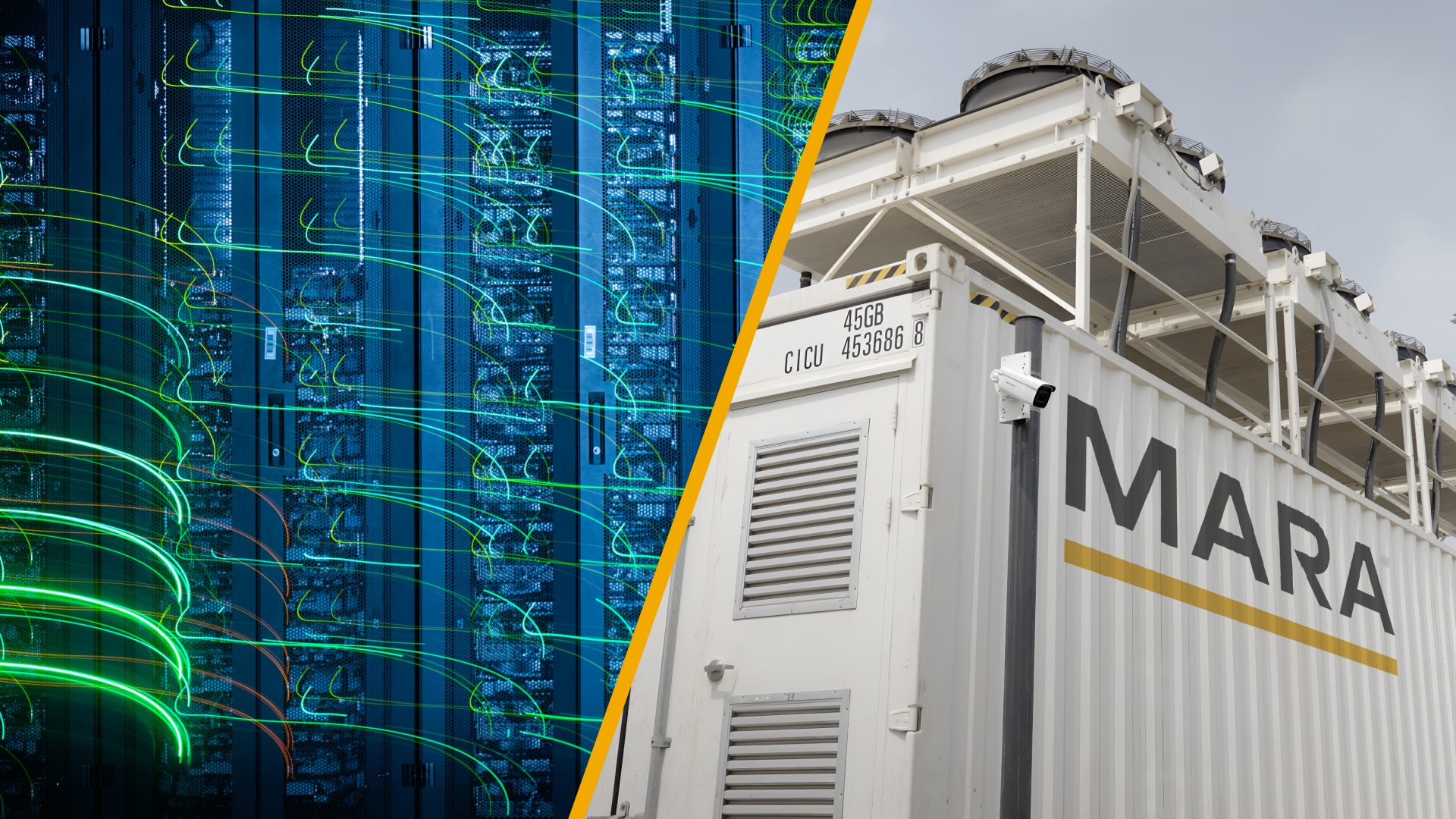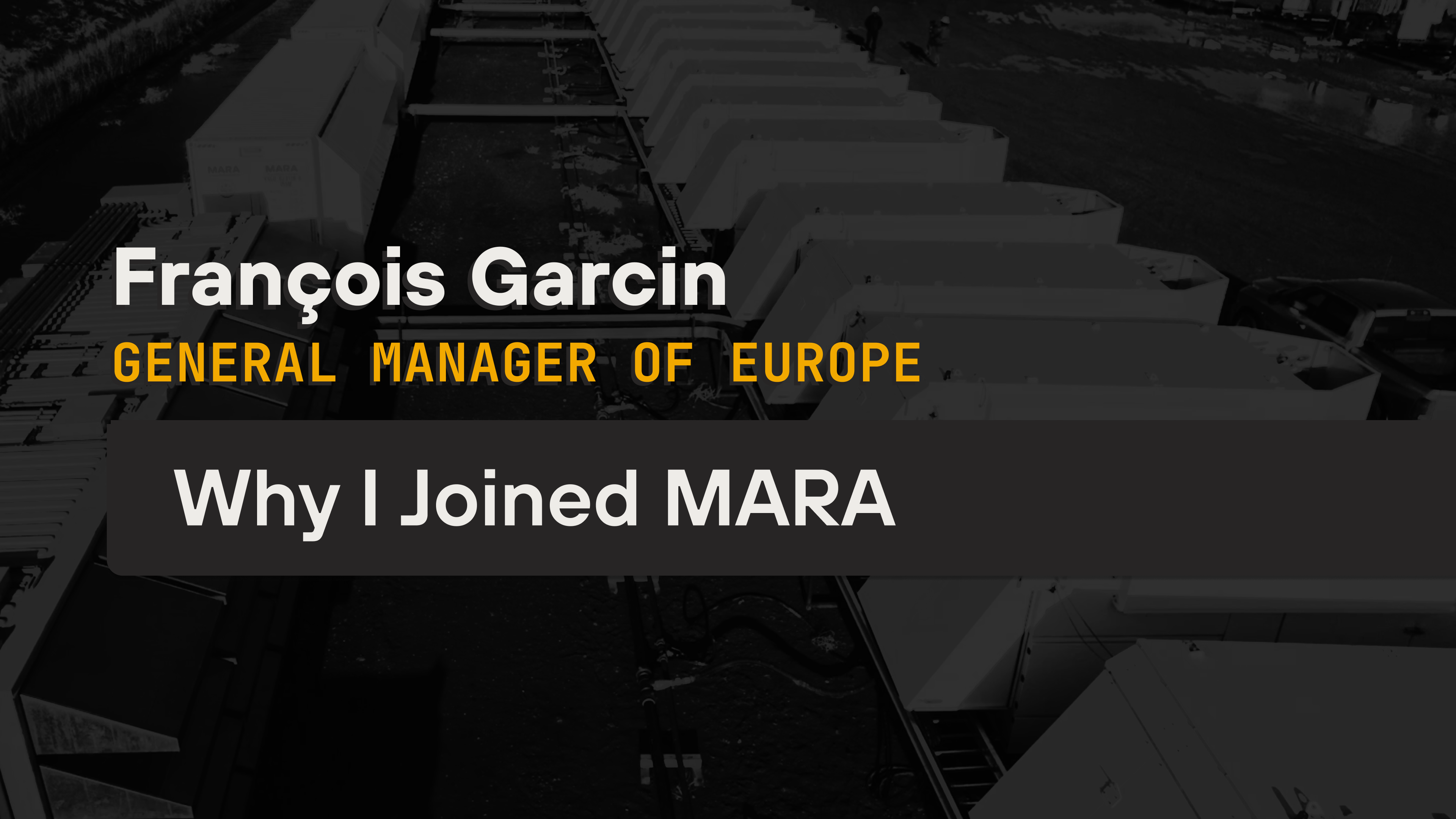TLDR
- Historically, district heating systems, which are critical for urban heating, have relied on carbon-emitting fuels. Digital asset compute (e.g., Bitcoin mining) facilities offer district heating a sustainable, efficient, and low-cost alternative by converting clean energy into heat directly on-site.
- Traditional data centers often struggle to effectively integrate with district heating systems due to heat quality and proximity issues, leading to inefficient heat transport and energy losses. In contrast, digital asset data centers can reliably generate heat at sufficient temperatures while being compact enough to co-locate with district heating systems, minimizing heat losses and infrastructure and operating costs.
- Integrating digital asset compute with district heating can significantly reduce carbon emissions, lower costs, and minimize waste heat, leading to enhanced sustainability and economic savings for both industries and end-users.
Disclaimer
This report is provided for general informational purposes only. The opinions expressed in the report may differ from those expressed by Marathon Digital Holdings (“MDH”), its officers, employees, directors or advisors or their affiliates. The information on this report does not constitute investment, legal, accounting or other advice or information by MDH or its officers, employees, directors or advisors or their affiliates. Information has been obtained from sources believed to be reliable, but MDH or its affiliates do not warrant its completeness or accuracy. Outlooks and past performance are not guarantees of future results. The information in the report may be changed without notice and is not guaranteed to be complete, correct or up-to- date, and may not reflect the most current developments.
Heat is an essential requirement across various applications. We use it for warming homes, water, and critical industrial processes. As urban communities continue to grow, district heating systems are poised to become an increasingly prevalent solution for meeting heating demands. However, district heating systems have historically relied on carbon-emitting fuels as energy sources, raising environmental concerns. While recycling heat from data centers offers a potential alternative heat source, traditional data centers often struggle to effectively integrate with district heating systems due to low-value heat and the physical distance that usually separates them from district heating facilities. In many cases, these challenges make it difficult to justify heat recycling as they lead to inefficient heat transport and energy losses.
Digital asset compute (e.g., Bitcoin mining) facilities present a viable solution to address these challenges. These digital asset data centers efficiently convert energy into heat and can be located directly on-site or adjacent to district heating systems, which eliminates the need for extensive pipeline infrastructure and minimizes heat losses. This co-location allows for low-cost, rapid deployment and ensures operations are energy-efficient and heat-efficient. Integrating digital asset compute with district heating systems offers numerous benefits, including reduced emissions, cost savings, and waste heat reduction, ultimately promoting sustainability for both industries.
Space and water heating for buildings consumed nearly half of the global energy demand, resulting in approximately 4 billion tons of direct and indirect CO2 emissions in 2022 alone.1 The sector’s significant contribution to emissions demonstrates the pressing need for more sustainable heating solutions. One promising solution is district heating, which involves heating water or steam in a central location and distributing it through a network of pipes within a local area.2 This method shows great promise for decarbonizing residential and commercial heating, particularly in urban areas.3
Figure 1: Gross EU Heat Production by Fuel in Combined Heat and Power and District Heating Plants, 20207

Despite its potential, district heating faces several challenges. It currently meets only 9% of the global final heating demand in buildings and industry.4 Additionally, district heating systems have historically relied on carbon-emitting heat sources.5 Even among the most renewably operated district heating systems, biomass (wood fuel) is the primary heat source, which introduces significant environmental concerns.6
For instance, Europe, with its extensive network of district heating and cooling systems serving over 100 million people, exemplifies both the potential and the challenges of this technology.8 While these systems are among the most renewable, their reliance on biomass raises concerns about their true environmental impact. Biomass accounts for 59% of the total renewable energy consumed in the EU,9and while classified as a renewable source, its widespread use in district heating systems is problematic. The combustion of biomass releases carbon dioxide and can contribute to deforestation, undermining its perceived environmental benefits.10
Examining nationally reported energy emissions data, which excludes bioenergy, there was a 26% reduction in emissions across the former EU-28 countries from 1990 to 2019.11 However, when accounting for emissions from bioenergy sources like biomass, there was only a 15% reduction in emissions during the same period (these figures only account for emissions from burning biomass and exclude life cycle emissions from changes in forest carbon stock).12 This discrepancy in emissions reporting highlights the importance of transitioning away from biomass as a heat source in order to achieve more substantial reductions in carbon emissions and support global decarbonization efforts.
The global energy landscape is also evolving. In 2023, renewables accounted for 86% of capacity additions worldwide.13 As electricity grids continue to decarbonize there is an opportunity to phase out carbon-emitting sources and electrify district heating systems. This transition could not only assist in reducing emissions but also presents a significant market opportunity for district heating.
According to Future Market Insights Inc. the district heating market size is currently estimated at $198 billion and is projected to grow to $340 billion by 2033.14 Research done by Project Drawdown projects that by 2050 replacing stand-alone water and space-heating systems with district heating systems could reduce global carbon dioxide emissions by 6.18-9.68 billion tons while saving between $1.54-$2.34 trillion in energy costs.15
Figure 2: District Heating Market Likely to Grow While Cutting Energy Costs and Emissions

With the advent of heat recovery, data centers may become the next technology to help district heating achieve the projections shown in Figure 2.
Europe’s colder climate has given rise to an extensive network of district heating systems that provide warmth to millions of residents. This same climate has attracted a different industry – data centers – which benefit from reduced energy consumption and infrastructure costs associated with the cooler temperatures.19 The share of electricity consumed by data centers in the EU is at least double the global average, with data centers accounting for around 3% of the EU’s electricity consumption compared, to 1.0-1.5% globally.20 These energy-intensive facilities generate significant amounts of heat, creating a unique opportunity for strategic partnerships with district heating systems.21
One industry needs heat, while the other generates plenty of it. Instead of wasting the abundant heat produced by data centers, it could be recycled to meet heating demand. This innovation transforms an unwanted byproduct of data centers into a valuable resource for district heating systems, reducing costs and waste for everyone involved while reducing the need for inefficient, carbon-emitting heat sources.22
Moreover, data centers often use electrical grids to power their operations, and in the EU the electricity mix is 39.4% renewable.23 This figure is significantly better than the EU’s heating and cooling energy mix, which is only 24.8% renewable.24 The potential to decarbonize the industry by integrating data centers into district heating systems is particularly promising in regions with exceptionally clean power, such as the Nordic countries.
Figure 3: Renewable Share of Heating and Cooling in the EU vs. Renewable Share of Power Generation in the EU and Nordic Countries

Figure 4: District Heating + Traditional Data Centers: How it Works

Implementing this process can allow data centers to save on electricity costs.32 Some countries even offer lower electric utility rates for data centers that reuse heat.33 Additionally, this approach reduces the need for district heating systems to generate as much heat, further decreasing overall energy consumption.34 The result is improved sustainability for both industries and potential cost savings on heating bills for end users.35
The symbiotic relationship between district heating systems and data centers is encouraging. However, significant obstacles still prevent traditional data centers from being the ideal solution for district heating systems.
Traditional data centers face challenges in integrating with district heating systems due to several factors. Here are the main challenges:
- Traditional data centers fail to meet the heating requirements for district heating. District heating networks typically supply homes with heat at around 80oC or higher,36 but traditional, air-cooled data centers generate heat at only about 25-35°C.37 To close this temperature gap, another heat source like an electric boiler or heat pump is needed to raise the water temperature by an additional ~ 50°C,38 which not only adds complexity but could also become too costly when electricity prices are high.39 The fact that waste heat from data centers is low quality is the main barrier to increasing investments in heat recovery.40
- Traditional data centers often lack proximity to district heating systems.41 To minimize the heat losses during transmission and energy costs for pumping, data centers must be located near urban centers where district heating network users reside.42 However, large data center campuses are usually found in remote regions, while smaller data centers in urban areas generate less heat.43
The challenge of using traditional data centers for district heating lies in their need to be large enough to generate sufficient heat and located near district heating systems for efficient and cost-effective heat transport. Unfortunately, these criteria are not always met.
There is a need for a more low-cost, scalable, and compact solution that uses clean grid energy. Such a solution may be emerging – digital asset compute (“DAC”).
Digital asset compute, a process that uses hashes (i.e., computational power) to generate and secure digital assets such as Bitcoin, presents a practical heating solution that can be integrated with district heating systems today. Digital asset data centers can be much more compact and energy dense than traditional, air-cooled data centers,44 meaning these systems are able to provide large quantities of heat at sufficient temperatures from within or directly adjacent to the district heating facility itself. This ability to co-locate with district heating systems means:
- Low-cost, rapid deployment: Eliminating the need to construct new pipelines from distant data centers to the nearest district heating network can reduce labor, infrastructure, and transport costs.
- Higher efficiency: Generating heat on site helps avoid the temperature decreases associated with transport from remote data centers.
Figure 5: District Heating + Digital Asset Compute: How it Works

DAC offers solutions to the limitations of traditional data centers. Here are the main advantages:
- Digital asset data centers are much closer to meeting the heat requirement for district heating. 95% of the electricity used for digital asset compute is converted into heat.48 For example, a single M63s hydro-cooled miner generates over 24,619 BTU per hour,49 almost five times more than an average space heater.50 Based on Marathon’s calculations, a facility using M63s hydro machines to heat water can achieve temperatures between 55°C and 75°C,51 significantly higher than the 25-35°C typically produced by the average heat-recycling data center.52 This means the water only needs to be heated by an additional 5-25°C, as compared to the 50°C required for a traditional data center,53 reducing the electricity burden for heat pumps.
- Digital asset data centers can be compact and energy-dense, enabling proximity to district heating systems. A 2-megawatt DAC system can be fully contained within a district heating system, housed in a space measuring no more than 50 feet by 50 feet.54 Remarkably, a 2MW DAC system using M63s machines can provide district heating for up to 4,000 homes.55
Like traditional data centers, digital asset data centers can offset operational costs through the heat that they sell, while also offsetting the amount of heat that district heaters need to generate. However, DAC can provide more heat, while operating onsite or in proximity to the district heating system, potentially improving cost advantages and efficiency for both parties.
Also, DAC systems are inherently modular, allowing them to scale their operations efficiently to align with the specific heating demands of a district. In contrast, the size of traditional data centers is largely dictated by consumer data demands rather than the district’s heating requirements.56 This modularity in Bitcoin miners enables precise adaptation to varying heat loads, optimizing energy use and enhancing system flexibility.
The economic viability of DAC systems, combined with their modularity and high thermal output, positions these data centers, not just as a data centers selling heat, but as purpose-built systems that can be designed specifically for district heating.
In addition to their scalability benefits, DAC can also reduce emissions of district heating systems. Based on our internal estimations, utilizing a single megawatt of DAC for district heating can prevent 1,500 tons of CO2 emissions per year when switching from biomass (assuming a Nordic context with 100% renewable grid electricity).
Shared Benefits of Digital Asset Compute and District Heating Integration:
- Reduced emissions for both the district heater and the DAC operator
- Reduced costs for the district heater, DAC operator, and end-users
- Reduced waste heat for the DAC operator
Figure 6: Digital Asset Data Centers vs. Traditional Data Centers for Heat Recovery

In short, digital asset compute presents a compelling solution that addresses the limitations of traditional data centers for district heating integration. By leveraging the high heat output and energy density of computing devices, digital asset compute can provide a scalable, and spatially economical source of heat for district heating systems. These characteristics allow DAC systems to be tailored specifically to the specifications set by the district heater, transcending traditional heat recycling models. As the world transitions towards more sustainable energy solutions, the synergy between digital asset compute and district heating systems emerges as a promising and greener path forward.
To test the theory that digital asset compute and district heating systems can be strategic partners, Marathon initiated a pilot project to recycle heat from one of its digital asset data centers to warm a community in Finland. Marathon energized the 2-megawatt site in a town of 11,000 residents within the Satakunta region. The 2-megawatt system is fully contained within a room measuring no more than 50 feet by 50 feet inside the district heating facility.
This pilot project is Marathon’s second trial in “energy harvesting,” which includes initiatives dedicated to converting waste into energy, methane gas recapture, stabilizing energy grids by utilizing stranded or excess energy, and reusing heat generated by data centers for industrial and commercial purposes.
Related reading: Recycling Heat from Data Centers To Warm a Community in Finland
- “Heating - IEA.” IEA. Accessed June 17, 2024. https://www.iea.org/energy-system/buildings/heating.
- Herbert, Y., Metz, P., Toroghi, S. S. H., Allar, R. F., & Frischmann, C. (2024, March 2). District heating. Project Drawdown. https://drawdown.org/solutions/district-heating.
- Ibid.
- “District Heating - IEA.” IEA. Accessed June 17, 2024. https://www.iea.org/energy-system/buildings/district-heating.
- Ibid.
- Braungardt, Sibylle, Klaus Hennenberg, Irina Ganal, Benjamin Köhler, Veit Bürger, and Christian Winger. Rep. The Role of Biomass in the Decarbonisation of the Heating Sector, May 2022. https://www.oeko.de/fileadmin/oekodoc/role-of-biomass-in-decarbonisation-of-heating-sector.pdf.
- “Decarbonising Heating and Cooling - a Climate Imperative.” European Environment Agency, April 28, 2023. https://www.eea.europa.eu/publications/decarbonisation-heating-and-cooling/decarbonising-heating-and-cooling.
- “District Heating Systems: Uneven Use around the World.” Planète, August 1, 2015. https://www.planete-energies.com/en/media/article/district-heating-systems-uneven-use-around-world.
- “Biomass.” Energy, European Commission. Accessed June 17, 2024. https://energy.ec.europa.eu/topics/renewable-energy/bioenergy/biomass_en.
- “Greenhouse gas emissions from burning US-sourced woody biomass in the EU and UK.” Chatham House – International Affairs Think Tank, October 17, 2022. https://www.chathamhouse.org/2021/10/greenhouse-gas-emissions-burning-us-sourced-woody-biomass-eu-and-uk/02-greenhouse-gas.
- Woodwell Climate. “Greenhouse Gas Emissions from Burning US-Sourced Woody Biomass in the EU and UK.” Woodwell Climate, October 14, 2021. https://www.woodwellclimate.org/greenhouse-gas-emissions-from-burning-us-sourced-woody-biomass-in-the-eu-and-uk/.
- Ibid.
- “Record Growth in Renewables, but Progress Needs to Be Equitable.” IRENA, March 27, 2024. https://www.irena.org/News/pressreleases/2024/Mar/Record-Growth-in-Renewables-but-Progress-Needs-to-be-Equitable.
- Kaitwade, Nikhil. “District Heating Market.” Future Market Insights, January 30, 2023. https://www.futuremarketinsights.com/reports/district-heating-market.
- Herbert, Y., Metz, P., Toroghi, S. S. H., Allar, R. F., & Frischmann, C. (2024, March 2). District heating. Project Drawdown. https://drawdown.org/solutions/district-heating.
- Kaitwade, Nikhil. “District Heating Market.” Future Market Insights, January 30, 2023. https://www.futuremarketinsights.com/reports/district-heating-market.
- Ibid.
- Herbert, Y., Metz, P., Toroghi, S. S. H., Allar, R. F., & Frischmann, C. (2024, March 2). District heating. Project Drawdown. https://drawdown.org/solutions/district-heating.
- “Is It a Good Idea to Build Data Center in Cold Regions?” Webwerks, March 3, 2023. https://www.webwerks.in/blogs/it-good-idea-build-data-center-cold-regions.
- Hanley, Steve. “Waste Heat from Data Centers Can Bolster District Heat Systems.” CleanTechnica, 2023. https://cleantechnica.com/2022/12/29/waste-heat-from-data-centers-can-bolster-district-heat-systems/.
- Lépineux, Benjamin. “Harnessing Waste Heat: The Imperative Shift for Data Centers.” Data Center Dynamics, November 30, 2023. https://www.datacenterdynamics.com/en/marketwatch/harnessing-waste-heat-the-imperative-shift-for-data-centers/.
- Wahlroos, Mikko, Matti Pärssinen, Jukka Manner, and Sanna Syri. “Utilizing Data Center Waste Heat in District Heating – Impacts on Energy Efficiency and Prospects for Low-Temperature District Heating Networks.” Energy 140 (December 2017): 1228–38. https://doi.org/10.1016/j.energy.2017.08.078.
- “How Is EU Electricity Produced and Sold?” European Council. Accessed June 17, 2024. https://www.consilium.europa.eu/en/infographics/how-is-eu-electricity-produced-and-sold/.
- “Heating and Cooling.” Energy, European Commission. Accessed June 17, 2024. https://energy.ec.europa.eu/topics/energy-efficiency/heating-and-cooling_en.
- Ibid.
- “How Is EU Electricity Produced and Sold?” European Council. Accessed June 17, 2024. https://www.consilium.europa.eu/en/infographics/how-is-eu-electricity-produced-and-sold/.
- Alves, Bruna. “Renewable Power Share in the Nordics 2022.” Statista, December 5, 2023. https://www.statista.com/statistics/1426747/share-of-renewables-in-power-generation-nordics/.
- “What Is a Water to Air Heat Exchanger?” Kooltronic. Accessed June 17, 2024. https://www.kooltronic.com/blog-article/1044/what-is-a-water-to-air-heat-exchanger.
- Wahlroos, Mikko, Matti Pärssinen, Samuli Rinne, Sanna Syri, and Jukka Manner. “Future Views on Waste Heat Utilization – Case of Data Centers in Northern Europe.” Renewable and Sustainable Energy Reviews 82 (February 2018): 1749–64. https://doi.org/10.1016/j.rser.2017.10.058.
- Saha, Jaydeep. “Waste Heat from Data Centers Powering the Nordics.” HCLTech, August 25, 2022. https://www.hcltech.com/trends-and-insights/waste-heat-data-centers-powering-nordics.
- Wright, Hannah. “Data Centres, Demand Response and Decarbonising the Cloud.” Energy Monitor, December 2, 2021. https://www.energymonitor.ai/digitalisation/data-centres-demand-response-and-decarbonising-the-cloud/.
- Fisher, Sharon. “Data Centers Leverage Cooling to Heat Homes.” Data Center Knowledge, January 18, 2023. https://www.datacenterknowledge.com/cooling/data-centers-leverage-cooling-to-heat-homes.
- Ibid.
- Buckingham, Chris. “Reclaiming Waste Heat: How District Heating Systems Are Paving the Way to a Sustainable Future in the UK.” LinkedIn, March 20, 2023. https://www.linkedin.com/pulse/reclaiming-waste-heat-how-district-heating/.
- Ibid.
- Wright, Hannah. “Data Centres, Demand Response and Decarbonising the Cloud.” Energy Monitor, December 2, 2021. https://www.energymonitor.ai/digitalisation/data-centres-demand-response-and-decarbonising-the-cloud/.
- Wahlroos, Mikko, Matti Pärssinen, Samuli Rinne, Sanna Syri, and Jukka Manner. “Future Views on Waste Heat Utilization – Case of Data Centers in Northern Europe.” Renewable and Sustainable Energy Reviews 82 (February 2018): 1749–64. https://doi.org/10.1016/j.rser.2017.10.058.
- Nelson, Michael. “Considering Data Centre Participation in District Heating Schemes.” Digital Infra Network, February 14, 2022. https://digitalinfranetwork.com/considering-data-centre-participation-in-district-heating-schemes/.
- Tofani, Arianna. Rep. A Case Study on the Integration of Excess Heat from Data Centres in the Stockholm District Heating System, 2022. https://kth.diva-portal.org/smash/get/diva2:1723944/FULLTEXT01.pdf.
- Ebrahimi, Khosrow, Gerard F. Jones, and Amy S. Fleischer. “A Review of Data Center Cooling Technology, Operating Conditions and the Corresponding Low-Grade Waste Heat Recovery Opportunities.” Renewable and Sustainable Energy Reviews 31 (March 2014): 622–38. https://doi.org/10.1016/j.rser.2013.12.007.
- Tofani, Arianna. Rep. A Case Study on the Integration of Excess Heat from Data Centres in the Stockholm District Heating System, 2022. https://kth.diva-portal.org/smash/get/diva2:1723944/FULLTEXT01.pdf.
- Ibid.
- Ibid.
- “Largest Bitcoin Mining Farms in the World.” Sunbird. Accessed June 17, 2024.
- Szamosszegi, Will. “Bitcoin Mining Heat Is Energy Gold. Let’s Make Use of It.” Forkast, April 21, 2023. https://forkast.news/bitcoin-mining-heat-is-energy-gold/.
- Based on Marathon’s internal analysis conducted May 2024.
- Wright, Hannah. “Data Centres, Demand Response and Decarbonising the Cloud.” Energy Monitor, December 2, 2021. https://www.energymonitor.ai/digitalisation/data-centres-demand-response-and-decarbonising-the-cloud/.
- Szamosszegi, Will. “Bitcoin Mining Heat Is Energy Gold. Let’s Make Use of It.” Forkast, April 21, 2023. https://forkast.news/bitcoin-mining-heat-is-energy-gold/.
- A single MicroBT Whatsminer M63S is rated 7215 watts. To convert from watts to BTUs, multiply watts by 3.412141633. 7215 watts x 3.412141633 = 24,619 BTUs/hr
- Castle, Tyler. “How Much Electricity Does a Space Heater Use? [Cost & More].” Santanna Energy Services. Accessed June 17, 2024. https://santannaenergyservices.com/how-much-electricity-does-a-space-heater-use/#:~:text=Are%20all%20electric%20space%20heaters,lower%20setting%20of%20750%20watts.
- Based on Marathon’s internal analysis conducted May 2024.
- Wahlroos, Mikko, Matti Pärssinen, Samuli Rinne, Sanna Syri, and Jukka Manner. “Future Views on Waste Heat Utilization – Case of Data Centers in Northern Europe.” Renewable and Sustainable Energy Reviews 82 (February 2018): 1749–64. https://doi.org/10.1016/j.rser.2017.10.058.
- Nelson, Michael. “Considering Data Centre Participation in District Heating Schemes.” Digital Infra Network, February 14, 2022. https://digitalinfranetwork.com/considering-data-centre-participation-in-district-heating-schemes/.
- Marathon’s internal data.
- Clausnitzer, J. “Finland: Average Family Size 2022.” Statista, May 10, 2024. https://www.statista.com/statistics/1101636/average-family-size-in-finland/. Note: Marathon’s energized 2-megawatt site provides heat to a district heater in a town of 11,000 residents within the Satakunta region. 11,000 residences (as of Jul 31, 2020)/2.72 (average people per household in Finland in 2020) = 4,044 households
- Mahan, Josh. “Data Center Capacity Planning [Ultimate Guide] - C&C Technology Group.” C&C Technology Group. Accessed June 18, 2024. https://cc-techgroup.com/data-center-capacity-planning/.




.png)






